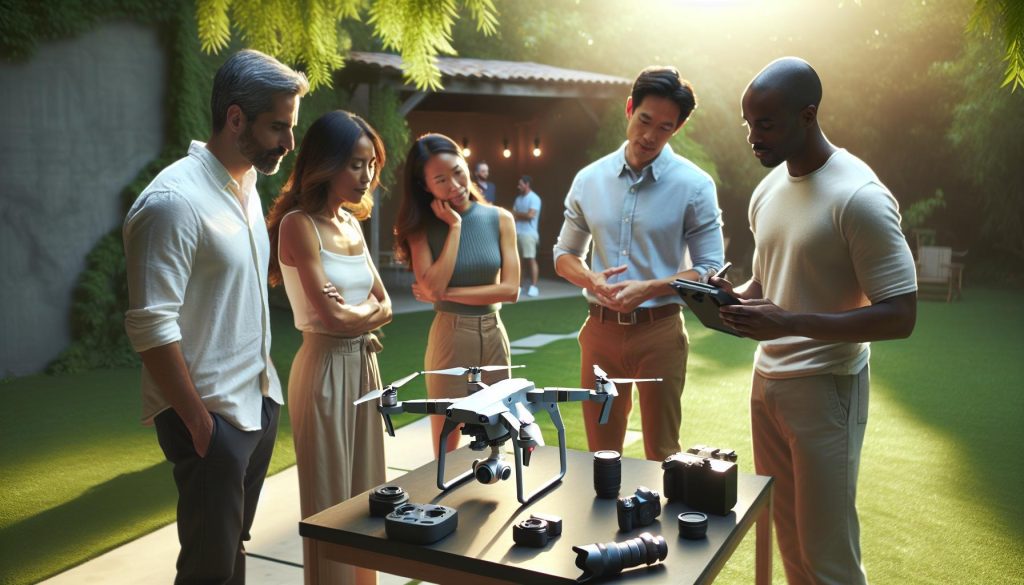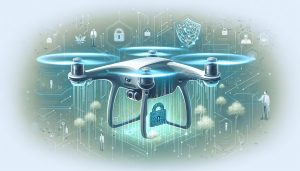As the drone market evolves, so do the options for upgrading your aerial equipment. Did you know that DJI offers trade-in programs designed to help pilots effortlessly transition to the latest models? This article dives into the ins and outs of DJI’s buyback approach, revealing how you can maximize your investment and make upgrading smoother than ever. Whether you’re a hobbyist looking to upgrade your gear or a professional needing the latest tech, understanding DJI’s trade-in secrets can significantly benefit your wallet and flying experience. Stick around as we uncover valuable insights to help you navigate the trade-in process effectively, ensuring you get the most value for your drone!
Does DJI Buy Back Drones? Understanding the Trade-In Program
DJI has developed a robust trade-in program designed to facilitate the upgrading process for drone enthusiasts and professional operators alike. This program allows customers to exchange their older DJI drones for credit towards the purchase of a new model, providing an accessible route for those looking to enhance their aerial capabilities without the burden of completely starting anew. By participating in this program, users not only help to recycle and promote sustainability within the drone industry but also receive tangible savings on their next investment.
To get started with the trade-in process, users typically need to assess the condition of their current drone model. Factors such as overall functionality, physical appearance, and completeness of accessories (like batteries and controllers) can significantly influence the trade-in value. DJI assures potential traders that the process is streamlined; customers can receive an immediate quote by submitting their drone’s details through the DJI website. This digital-first approach simplifies the transaction, allowing for a quick turnaround in obtaining credit.
It’s essential to be aware of the models eligible for the trade-in program. DJI usually includes a range of popular drones spanning various categories, such as the Mavic series, Phantom series, and others. However, specific eligibility can change, so it’s advisable to check the latest guidelines directly on the DJI website. In maximizing value, maintenance and bit of care for your drone can lead to a more favorable evaluation of your unit. Thus, keeping it in optimal condition before trade-in could potentially net you additional savings on your next purchase.
Lastly, many users have shared positive experiences related to DJI’s trade-in program, often citing ease of use and helpful customer service. Exploring these customer stories can provide insights into the potential benefits and establish confidence in your decision to participate in the trade-in program. Whether you’re looking to upgrade for the latest drone technology or shift to a more advanced model suited for specific needs, DJI’s trade-in program offers an efficient solution to keep you flying high without significant financial strain.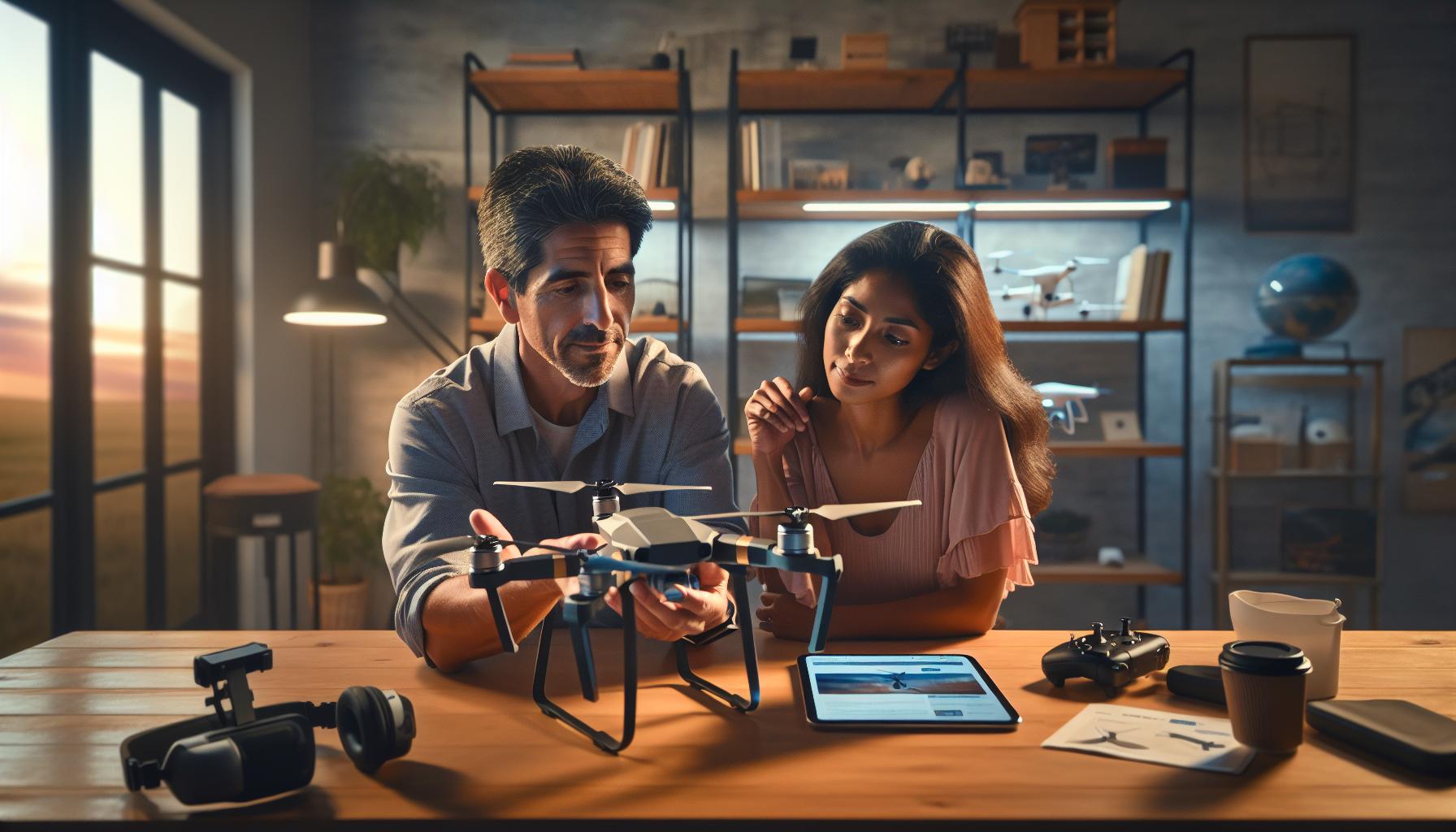
The Benefits of Trading In Your DJI Drone
Trading in your DJI drone presents a unique opportunity not only to save money but also to upgrade your aerial toolkit seamlessly. This approach allows drone enthusiasts and professionals to capitalize on the depreciation of their current equipment while investing in the latest technologies. With the rapid pace of innovation in the drone industry, upgrading becomes essential to harness improved features, enhanced performance, and increased capabilities that newer models offer.
One of the most significant benefits of participating in a trade-in program is the potential for substantial savings on your next purchase. By exchanging an older model, you can receive credit that directly reduces the upfront cost of upgrading. Many users have shared that this credit has made a significant difference, enabling them to access higher-end models that would have been out of budget otherwise. This financial incentive can encourage even novice pilots to experiment with advanced drones, opening doors to new creative opportunities and enhanced flight experiences.
Moreover, trading in your drone contributes to sustainability efforts within the tech community. By recycling your older models through established programs, you help to reduce electronic waste and promote a cycle of reuse. This not only supports environmental goals but also aligns with the growing consumer preference for eco-friendly practices. The feeling of making a responsible choice while upgrading your gear adds a layer of satisfaction to the experience.
In addition to financial and environmental benefits, the trade-in process itself is often designed to be user-friendly. Many programs, such as DJI’s, provide a straightforward evaluation process where details about your drone can be submitted online for an immediate quote. This simplicity alleviates the stresses associated with selling used equipment and allows you to focus on finding the next drone that meets your needs. The knowledge that there’s a hassle-free way to upgrade can inspire more frequent exploration of new drone technologies, ultimately enhancing your aerial adventures.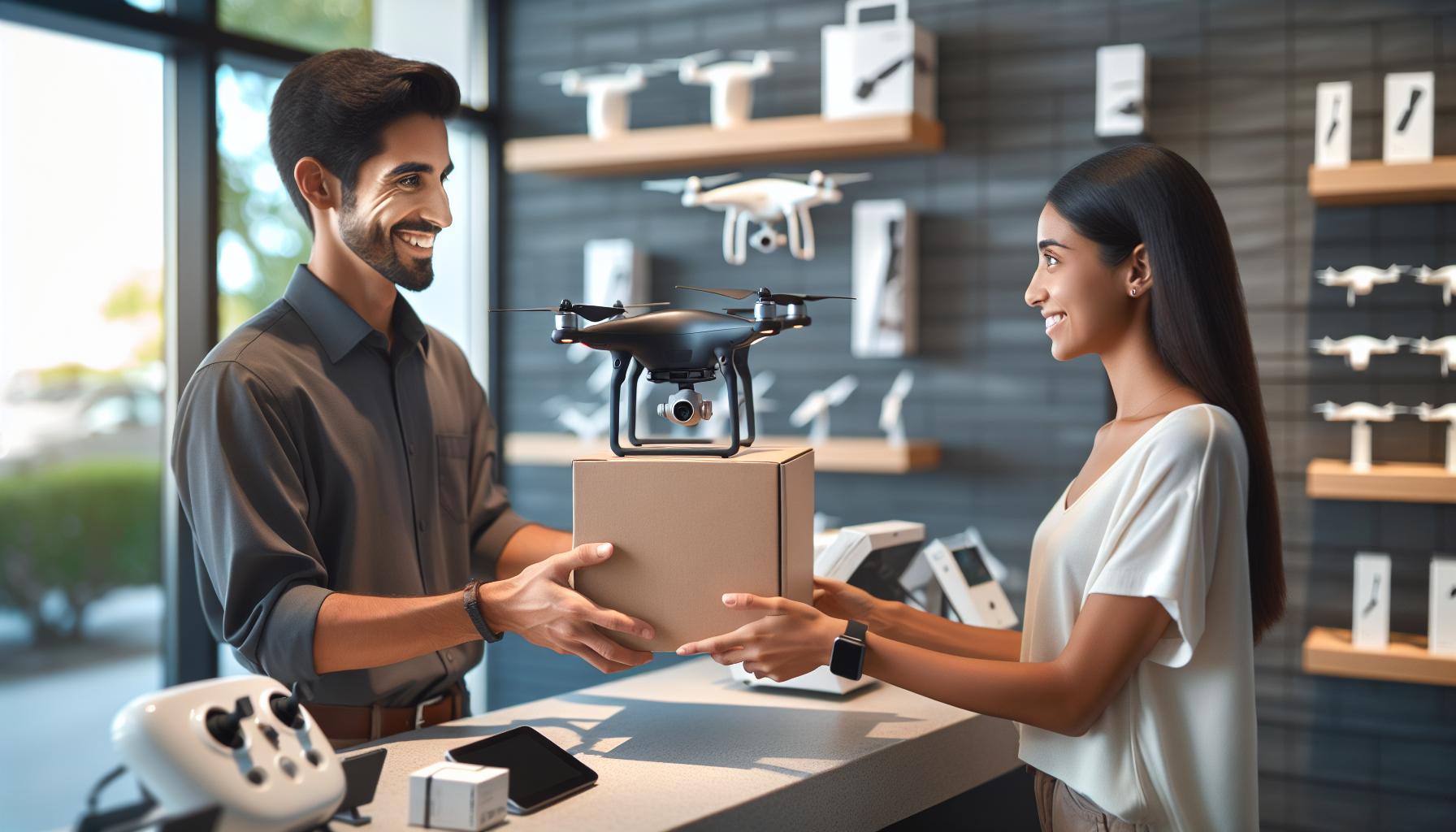
How to Evaluate Your DJI Drone for Trade-In
Evaluating your DJI drone before initiating a trade-in is a critical step that can significantly influence the trade-in value you receive. Understanding the condition of your drone, its functionality, and how market demand affects its worth will empower you to make informed decisions that can maximize your potential credit.
Begin by conducting a thorough inspection of your drone. Assess both the cosmetic condition and the mechanical functionality. Look for any signs of wear, such as scratches on the body, damaged propellers, or cracks in the camera lens. Next, ensure that all functionalities are in working order. Test the flight controls, camera operations, battery life, and connection stability. A drone that operates flawlessly is more attractive to prospective buyers or trade-in programs.
Checklist for Evaluating Your Drone
- Cosmetic Condition: Note any scratches, dents, or discoloration.
- Functional Testing: Check flight stability, camera performance, and battery health.
- Firmware Updates: Ensure your drone has the latest updates installed.
- Accessories: Include original packaging, remote controls, and extra batteries for added value.
Furthermore, researching market trends can give you insight into how much demand there is for your specific DJI model. Popular models like the DJI Mavic Air or Phantom 4 often retain their value better than older or less popular models. Keeping abreast of current prices on various platforms can serve as a useful benchmark when evaluating your drone.
To streamline this process, consider utilizing online evaluation tools provided by retailers well-versed in drone trade-ins. These platforms often offer instant quotes based on the details you submit, making it easier to understand the potential value of your craft. By being methodical and thorough in your evaluation, you’ll position yourself to negotiate effectively during the trade-in process, ensuring that you receive the best possible credit towards your next drone purchase.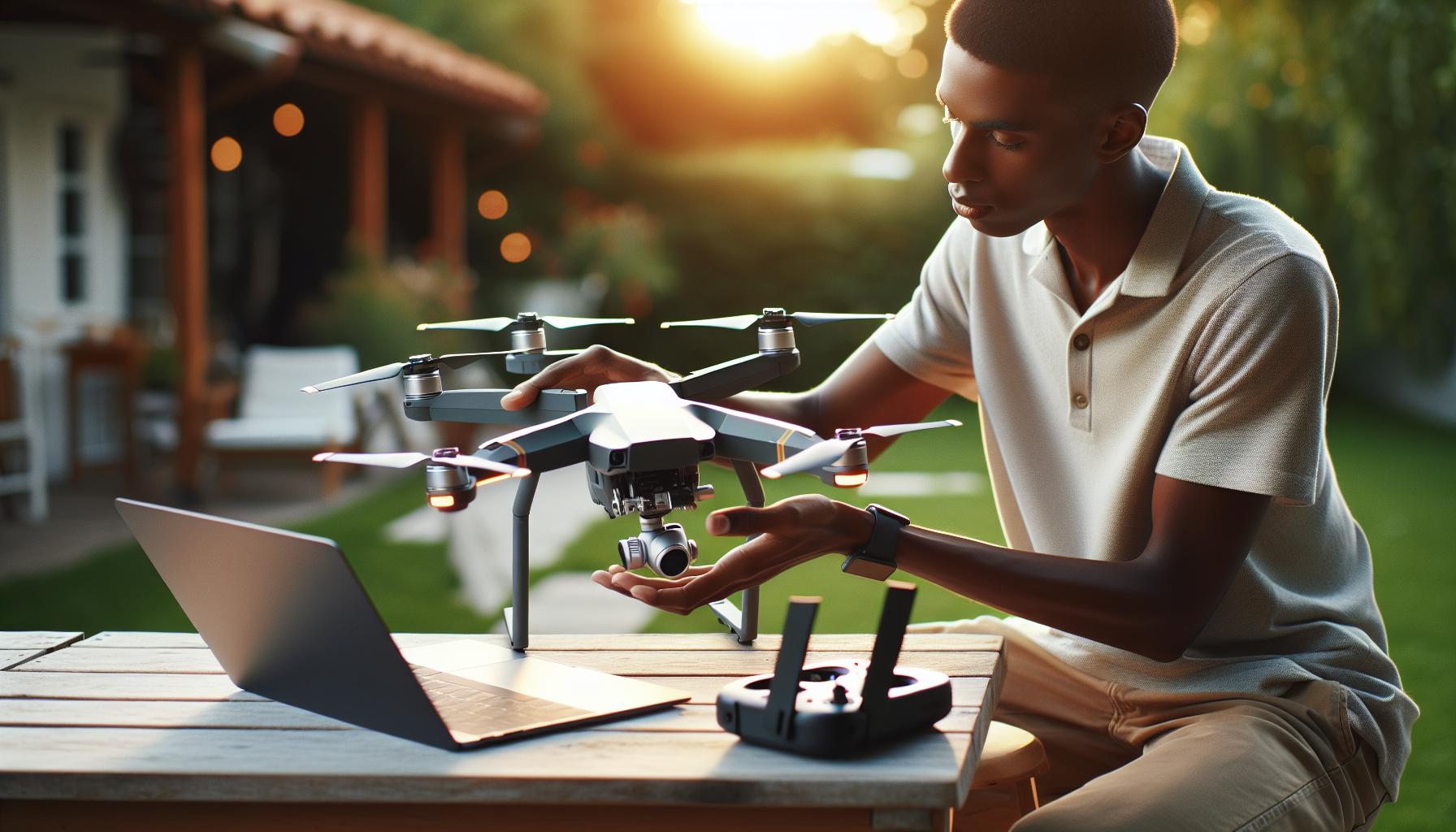
Step-by-Step Guide to the DJI Trade-In Process
Understanding the intricacies of the DJI trade-in process can enhance your experience and maximize the benefits of upgrading your drone. The journey begins when you decide to trade in your current DJI model, and a streamlined approach ensures you gather the necessary information and resources for a smooth transaction.
First, identify your drone’s model and condition, which will play a crucial role in the quote you receive. Most trade-in programs, including those from retailers and DJI affiliates, require details on the model, age, and any signs of wear or damage. Many platforms offer online evaluation tools where you can submit this information to receive an instant quote.
Once you have your estimated value, you can prepare for the trade-in. Gather all original accessories, including batteries, remote controls, and packaging. This additional gear can increase your overall trade-in value. Before sending your drone, clean it thoroughly to improve its appearance and potentially the offer you receive.
Next, reach out to the retailer or platform offering the trade-in program. You will likely need to fill out a submission form, including the details you’ve gathered. Depending on the program, you may need to send your drone to them or take it to a physical location. Ensure that you receive confirmation of your submission and any necessary next steps.
After your drone is received, it will undergo an inspection. The final trade-in value may differ from the initial quote based on the condition assessment. If you agree with the final value, you can receive your credit or cash payout, which can then be used toward your next purchase, making it a convenient and beneficial way to upgrade your drone fleet effectively.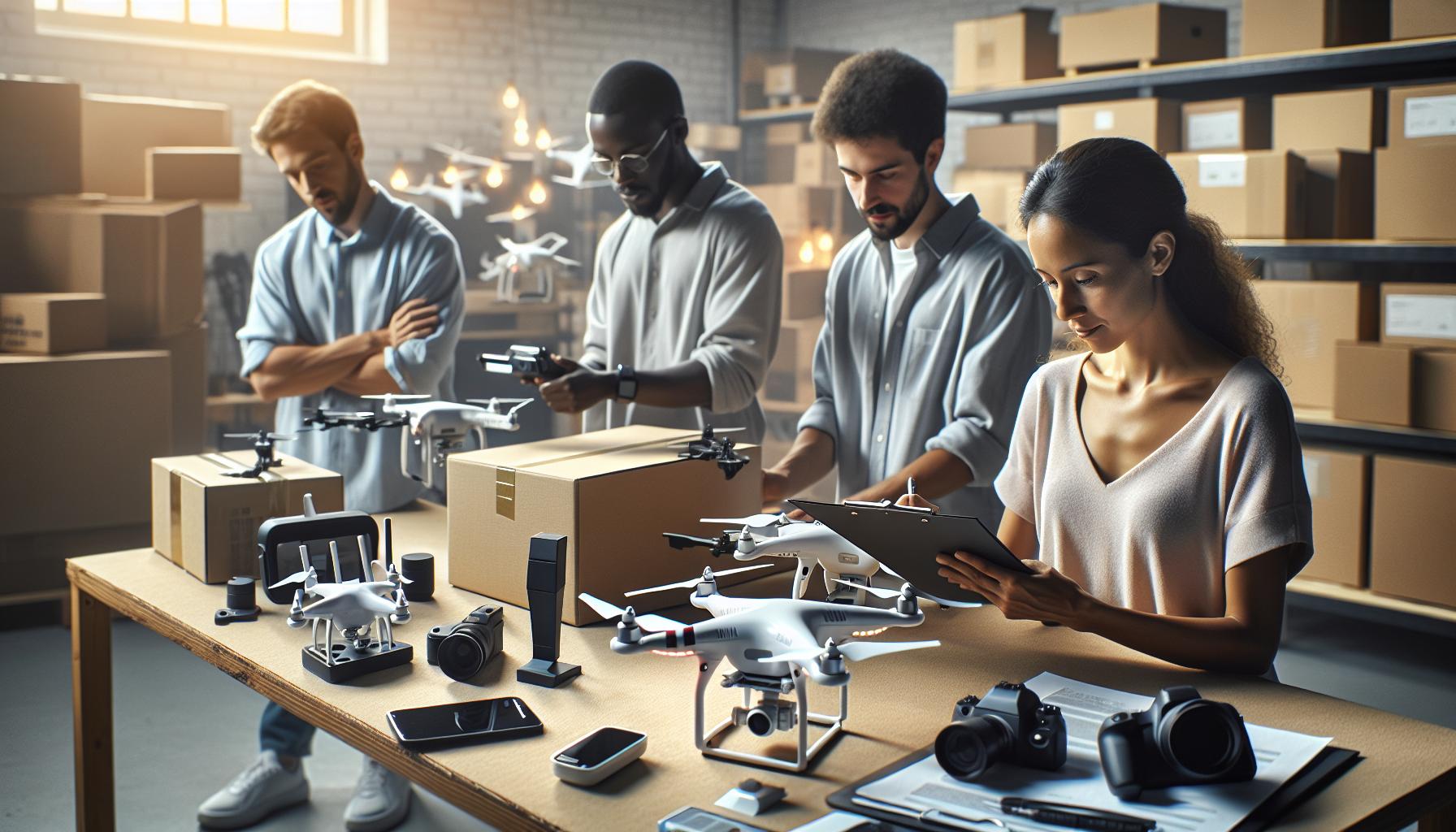
What Models Are Eligible for Trade-In?
When considering whether to trade in your DJI drone, understanding the specific models eligible for such programs is crucial. DJI has consistently produced a diverse lineup of drones, making many of them valuable candidates for trade-in based on their popularity and performance features. Typically, the models best suited for trade-in programs include the latest iterations of the Phantom, Mavic, Air, and Mini series, which are known for their advanced technology and broad appeal.
Eligible Models for Trade-In
The following models are commonly accepted in most DJI trade-in programs:
- DJI Mavic Series: This series includes beloved models like the Mavic Air 2, Mavic 3, and Mavic Mini. Their compact design and mobility make them popular among both hobbyists and professionals, enhancing their trade-in value.
- Phantom Series: The Phantom 4 and its variants (such as the Phantom 4 Pro and Advanced) remain highly regarded for their stability and camera quality, making them sought-after for trade-ins.
- DJI Air Series: The Air 2S and Air 2, known for their impressive camera capabilities and user-friendly features, are also often included in trade-in programs.
- Mini Series: Models like the Mini 2 are appealing due to their lightweight design and ease of use, making them eligible for trade-in despite their smaller size.
Understanding which models are eligible can help ensure you make the best choice when upgrading. It’s also worth noting that older models, such as the Spark or previous generations of the Phantom series, may still hold some trade-in value depending on their condition and functionality.
Condition Matters
Ultimately, the condition of your drone can significantly influence your eligibility and the value you receive. Drones that are well-maintained, complete with original accessories, and free from significant damage tend to qualify for higher trade-in values. Each retailer or trade-in program may have slightly different eligibility criteria, so it’s advisable to check the specific terms and conditions of each program to maximize your benefits. Engaging with the trade-in process allows drone enthusiasts to upgrade efficiently while contributing to a more sustainable cycle in drone technology.
Maximizing Your Trade-In Value: Tips and Tricks
To unlock the highest trade-in value for your DJI drone, a strategic approach can make all the difference. Just like preparing a vehicle for sale, ensuring your drone is in top condition and presenting it well can significantly influence offers from trade-in programs. Here are some expert tips to maximize your drone’s trade-in potential.
First, focus on cleanliness and maintenance. Thoroughly clean your drone, removing any dirt, dust, and debris from all components, including the propellers and camera lens. This not only enhances its aesthetic appeal but also demonstrates that you’ve cared for the device. Additionally, check and update the firmware if required, as this can ensure optimal performance and may improve the perceived value of your drone.
Next, organize all original accessories. Presenting your drone with its original packaging, remote controller, extra batteries, and any additional accessories can positively impact the trade-in offer. Listing everything you include-particularly any seldom-used add-ons-can help assess the value of your package and appeal to potential buyers. Presentation matters; consider packaging everything together neatly to show that the drone has been kept in excellent condition.
Another crucial factor is documenting the drone’s history. If your drone has been repaired or serviced professionally, having documentation can attest to its quality. If applicable, gather all receipts and service records that prove the drone’s maintenance history. Many trade-in programs consider these records as reassuring indicators of reliability, which can lead to more favorable offers.
Lastly, research and compare trade-in values from different programs before committing to one. Not all trade-in programs value the same models similarly; some may give a higher credit for specific models or inclusions. Utilize online trade-in calculators provided by various retailers or compare rates from local stores to ensure you are maximizing your return. By engaging in due diligence, you can ensure that you receive the best possible trade-in value for your DJI drone.
Common Misconceptions About DJI Trade-Ins
Many drone enthusiasts hold various misconceptions about DJI’s trade-in program, often leading to confusion and missed opportunities. One common belief is that only heavily used or damaged drones can be traded in. In reality, DJI accepts a range of models in various conditions, and even if your drone shows signs of wear, it may still have substantial value. Drones that have been well-cared for or maintained with original packaging often garner better trade-in offers.
Another frequently encountered misunderstanding concerns the timing of the trade-in. Many pilots mistakenly think they must wait until they are considering a new purchase before initiating a trade-in. However, DJI’s trade-in program allows users to trade in at any time, providing flexibility to upgrade or transition to newer models when it is most convenient for them. Proactively trading in your older drone can also open doors to discounts on new purchases, making the transition smoother.
Some users assume that the trade-in value of their drone is static and non-negotiable. In fact, DJI evaluates trade-in values based on various factors, including market conditions and the specific model’s demand. If you’re well-informed about your drone’s condition and market trends, you can advocate for a more favorable offer. Additionally, it’s beneficial to gather comprehensive maintenance records, as this can validate the drone’s condition and reliability, potentially influencing the final trade-in value.
Lastly, there’s a belief that DJI’s trade-in program is limited to certain models. While some models may receive higher trade-in values due to popularity or new releases, the program is designed to accommodate a wide array of DJI products. Always check for the latest information about eligible models on DJI’s website or directly through the trade-in portal, as this can change with advancements in technology and product lineup.
By addressing these misconceptions, drone pilots can navigate DJI’s trade-in program more confidently and capitalize on the potential value their drones hold.
The Impact of Drone Condition on Trade-In Offers
Evaluating the condition of your drone is crucial when considering a trade-in with DJI, as it significantly influences the trade-in offer you receive. Typically, DJI assesses drones based on both their physical state and functional performance. A well-maintained drone will not only command a higher valuation but also streamline the entire trade-in process. Regular inspections, thorough cleaning, and ensuring that all components are functioning optimally can greatly enhance your drone’s condition.
Factors Affecting Trade-In Value
The primary factors affecting trade-in offers include:
- Physical Condition: Drones with minimal wear, no scratches, and intact components will generally receive better offers. Any damage, such as cracked propellers or a scuffed camera lens, can negatively impact value.
- Functional Integrity: The drone’s operational capabilities-such as flight time, GPS accuracy, and gimbal stability-play a significant role in determining its worth. Drones that have undergone consistent maintenance and repairs, where necessary, are more likely to receive favorable assessments.
- Original Packaging and Accessories: Including all original components, such as batteries, chargers, and manuals, can substantially boost the trade-in offer. A complete package signifies that the drone was well taken care of.
- Market Demand: The popularity of specific models can fluctuate, influencing trade-in values. Keep an eye on market trends to understand which models are in demand and how that might affect your drone’s worth.
Tips to Maximize Your Trade-In Offer
To ensure you get the best possible trade-in value, consider the following strategies:
- Perform a Thorough Inspection: Before initiating the trade-in process, conduct a detailed inspection of your drone. Fix any minor issues and consider investing in a professional cleaning service if needed.
- Keep Records: Maintain documentation of any repairs or maintenance performed. This can help demonstrate the drone’s reliability and condition, potentially increasing its value during evaluation.
- Update Firmware: Make sure your drone’s firmware is up to date. An updated system indicates that you have kept the drone well-maintained and compliant with the latest features.
- Research Comparable Models: Understanding how similar models are valued in the market can give you insights into what offers you might expect, allowing for better negotiation if you feel the initial offer is low.
In summary, a drone’s condition can play a pivotal role in its trade-in value within DJI’s program. By emphasizing care and maintenance, you not only enhance your drone’s appeal but can leverage its condition to maximize your trade-in return. Taking proactive steps to elevate your drone’s overall state will not only benefit you at trade-in time but will also contribute to a safer flying experience in the interim.
Alternatives to DJI’s Trade-In Program
Exploring can provide various avenues for drone enthusiasts looking to upgrade or part ways with their equipment. Whether due to concerns over trade-in values or the desire for a more tailored selling experience, there are compelling options available.
Selling your drone privately is a popular alternative. Platforms like eBay, Facebook Marketplace, and specialized drone-selling websites allow you to set your own price, which can often yield higher returns than a trade-in. To successfully navigate this option, consider taking high-quality photos, providing an honest and detailed description of the drone’s condition, and being transparent about its usage history. Including original packaging and accessories can further entice potential buyers and increase your drone’s value.
Consignment Shops and Local Retailers
Another effective approach is utilizing consignment shops or local retailers that specialize in drones and camera equipment. These shops can handle the selling process on your behalf, allowing you to avoid the hassle of listing and meeting with multiple buyers. In return, they typically take a commission from the sale. This option is advantageous for those who prefer a more hands-off approach while still getting an opportunity to maximize their drone’s selling price.
Trade-In Programs from Other Manufacturers
Additionally, explore trade-in programs offered by other manufacturers or retailers. Companies like GoPro or camera brands may have incentives for trading in your older gear when purchasing new models. These alternatives sometimes feature more competitive offers, especially if you’re looking to switch brands or try new technology.
By considering these options, you can make informed decisions that align with your personal preferences and financial goals. Each pathway has its advantages, and leveraging these alternatives can lead to a beneficial outcome, whether that be through maximizing profit in a sale or accessing a new drone model at a favorable price.
Customer Experiences: Real Stories of DJI Trade-Ins
Many drone enthusiasts have turned to DJI’s trade-in program as a convenient way to upgrade their equipment while receiving fair compensation for their old devices. One such story comes from Mark, a seasoned photographer who had just upgraded from an older Mavic Air to the new Mavic 3. “I was worried about the value I’d get for my Mavic Air,” he admits, “but the trade-in process was surprisingly straightforward. I filled out the online evaluation, sent in the drone, and received a decent credit towards my new purchase.” His experience highlights how DJI’s program provides a safe and reliable avenue for selling older models without the hassles typically associated with private sales.
Similarly, Sarah, a budding drone pilot, shared her experience with upgrading to the Mini 3 Pro. “At first, I thought I’d just sell my old Mini 2 on eBay, but I was overwhelmed by the listings and prices,” she said. “Switching to DJI’s trade-in program made more sense. I was able to do it all online, and I didn’t have to worry about negotiating with potential buyers.” Her seamless transition underscores the benefits of the program, especially for those new to drone operations who may not want to navigate the complexities of online sales platforms.
When it comes to maximizing trade-in value, some users recommend maintaining their drones in good condition. James, an avid drone user, explains, “I always keep extra batteries and the original box. When I went to trade my Phantom 4, I think it made a difference in the offer I received. Small things like that can really add up.” His advice stresses the importance of preparation prior to the trade-in process, as it not only enhances the perceived value but can also lead to a better offer from DJI.
The stories shared by these users reflect a broader trend among drone enthusiasts who appreciate how DJI’s trade-in program simplifies the upgrading process. By offering a smooth and user-friendly experience, DJI caters to both seasoned pilots looking to stay at the forefront of technology and newcomers eager to explore the possibilities of drone photography and videography without an extensive financial burden. The program not only helps reduce e-waste but also fosters a community of users who can continuously upgrade their gear with ease.
Top Questions About DJI’s Trade-In Program Answered
Navigating the intricacies of DJI’s trade-in program can often raise a number of questions for both novice and seasoned drone enthusiasts. Understanding the program’s specifics is crucial for making the most of your drone upgrade experiences. Here are some of the most frequently asked questions regarding this program, along with clarifications and insights to aid in your decision-making.
One common inquiry is whether DJI actually buys back drones. DJI operates upon a trade-in model rather than a direct buyback. This means they accept your used drone in exchange for credit equal to its assessed value, which can then be applied to your next purchase. Users generally appreciate this system, as it streamlines the process of upgrading to new models without needing to worry about selling the old drone on private markets.
How Is Trade-In Value Determined?
The evaluation process for determining your drone’s trade-in value typically considers several factors, including its age, model, and overall condition. Drones kept in good condition, complete with original packaging and accessories, tend to fetch higher offers. Additionally, the online evaluation tool offered by DJI allows users to input specific details about their drone, giving an initial estimate before sending the device in for final assessment.
What Should I Do Before Trading In My Drone?
Before initiating the trade-in process, there are important steps to enhance your drone’s value. Consider the following:
- Clean Your Drone: A tidy drone not only appears more appealing but reflects care that can positively influence evaluation results.
- Gather Accessories: Include extra batteries, the original box, and any other accessories originally bundled with the drone. This completeness can enhance the perceived value.
- Factory Reset: Erase any personal data or settings to facilitate a smoother transition to the next owner.
These steps can make a significant difference in your trade-in value, ensuring you maximize the credit toward your next DJI purchase.
Can I Trade In Any Model?
DJI’s trade-in program primarily supports their most popular models, including the Mavic, Phantom, and Air series. However, the eligibility for each specific model can vary and is contingent upon current market demand and the condition of the drone. Always check the official DJI website or contact customer support for the most accurate information regarding which models are currently accepted for trade-in.
Potential traders should remember that engaging with discussions on forums such as online drone communities can offer insights and experiences from fellow pilots. These interactions clarify doubts about the process and help build a solid understanding of how the trade-in program can best serve individual needs.
Future Trends in Drone Buy-Back Programs
As the drone industry continues to evolve, so do the buy-back and trade-in programs. Emerging trends indicate a shift towards more streamlined and user-friendly buy-back models, catering to an increasingly tech-savvy consumer base. With the rapid innovation in drone technology, manufacturers like DJI are focusing on maintaining customer loyalty through improved trade-in offerings and enhanced value propositions.
One notable trend is the integration of artificial intelligence and machine learning to assess drone conditions more accurately. Companies are beginning to utilize advanced algorithms to provide instant evaluations based on users’ input about their drone’s condition, model, and age. This not only speeds up the trade-in process but also provides more transparent pricing, where customers receive fairer and more competitive offers for their devices. As this technology matures, buyers can expect even quicker turnarounds and more reliable valuation standards.
Additionally, there is a growing emphasis on sustainability within the drone community. Brands are increasingly aware of the environmental impact of e-waste and are implementing programs that encourage users to trade in old drones for upgraded models, which are often made with recycled materials. This trend aligns with broader corporate responsibility goals, making drone owners feel more connected to an environmentally friendly initiative. The concept of incorporating a circular economy where drones are refurbished and resold rather than discarded is gaining traction, enhancing the overall appeal of trade-in programs.
As competition in the drone market intensifies, companies are likely to diversify their trade-in policies to include not just older models but also compatible accessories and peripheral equipment. Such moves would provide additional incentives for customers to return their used gear, creating a comprehensive ecosystem. As a result, consumers may soon find themselves with more attractive options for maximizing value and enjoying seamless upgrades to the latest, cutting-edge drone technology.
Faq
Q: Does DJI have a trade-in program for drones?
A: Yes, DJI offers a trade-in program allowing users to exchange their old drones for store credit or discounts on new purchases. To learn more about eligible models and the process, you can check the specific details outlined in DJI’s trade-in guidelines in your article.
Q: What types of drones can I trade in for DJI’s program?
A: You can typically trade in used DJI drones, such as the Phantom, Mavic, and Mini series. Be sure to check the most current eligibility criteria, as it may vary based on drone condition and specific models.
Q: How does DJI determine the trade-in value of a drone?
A: DJI assesses trade-in values based on the drone’s condition, model, age, and current market trends. To maximize your offer, ensure your drone is in good working condition and well-maintained.
Q: Can I trade in a damaged or crashed DJI drone?
A: Yes, DJI accepts crashed drones for trade-in, but the value will be significantly lower than for fully functional units. Damage specifics can impact your offer, so consider this when planning to trade in.
Q: How do I prepare my DJI drone for the trade-in process?
A: To prepare your DJI drone for trade-in, clean it thoroughly, remove personal data, and ensure it is in working order. Collect all accessories and original packaging if possible, as this can enhance trade-in value.
Q: What is the time frame for receiving credit after trading in my DJI drone?
A: After completing the trade-in process, users can typically expect to receive credit or discount offers within a few days to a week. Keep an eye on your email for confirmation and next steps.
Q: Are there any fees associated with trading in my DJI drone?
A: There are generally no fees when participating in DJI’s trade-in program. However, be aware of any conditions or requirements that might affect the final offer or eligibility for the program.
Q: What are the benefits of trading in my DJI drone instead of selling it privately?
A: Trading in your DJI drone is convenient, often quicker, and ensures a smoother process compared to selling privately. You’ll receive an immediate store credit or discount without the hassle of market pricing or negotiations.
Closing Remarks
Ready to make the most out of your drone investment? Understanding DJI’s trade-in options can help you turn your old equipment into cash for your next aerial adventure! If you have lingering questions about the process or want to explore more about upgrading your gear, check out our comprehensive guides on drone setup and maintenance, as well as our detailed model comparisons to find the perfect fit for your needs.
Don’t miss out-sign up for our newsletter to stay ahead with the latest DJI news and exclusive tips for maximizing your flying experience. Whether you’re a beginner or a seasoned pilot, there’s always more to discover in the world of drones. Share your thoughts in the comments below, and keep flying high with confidence!

